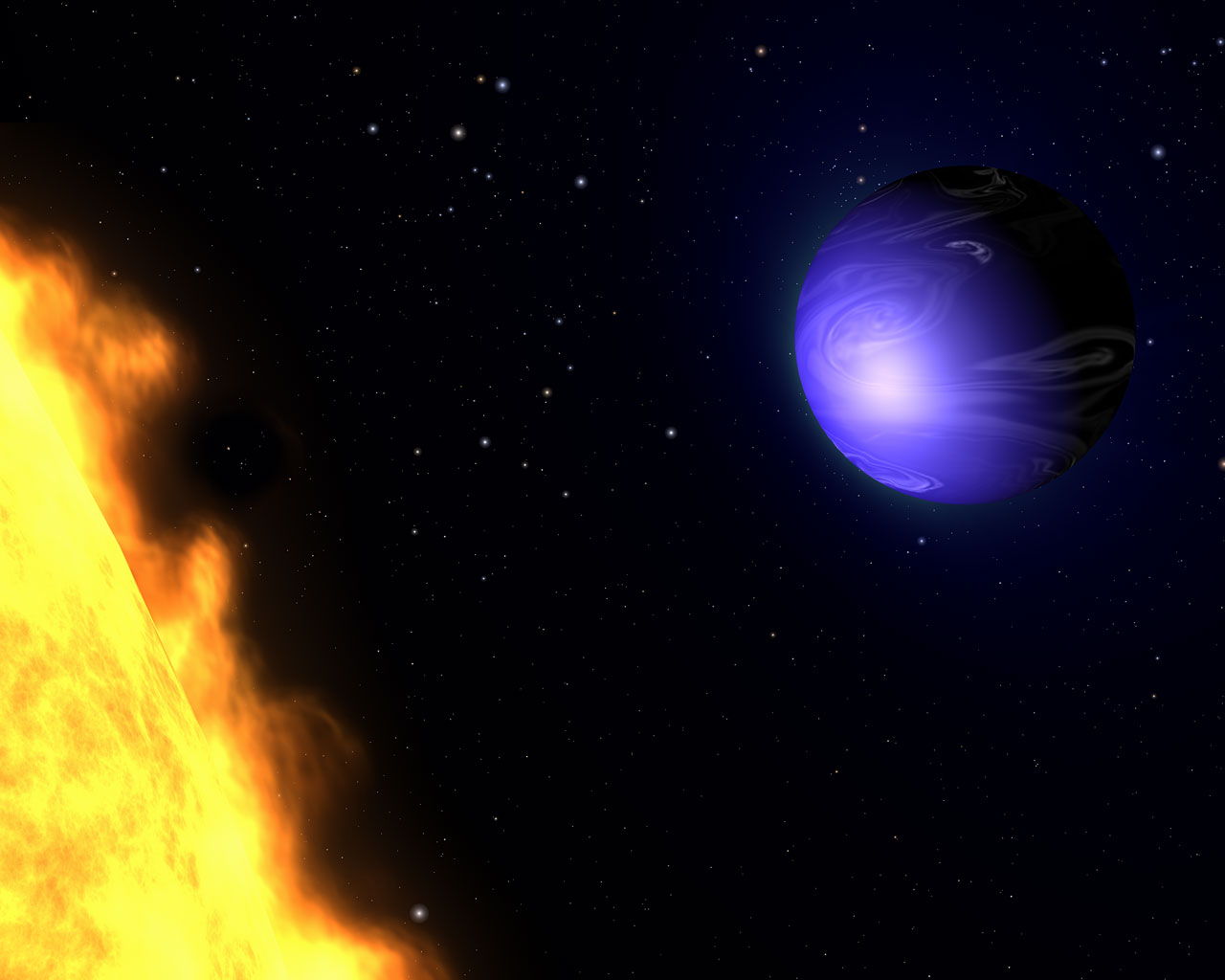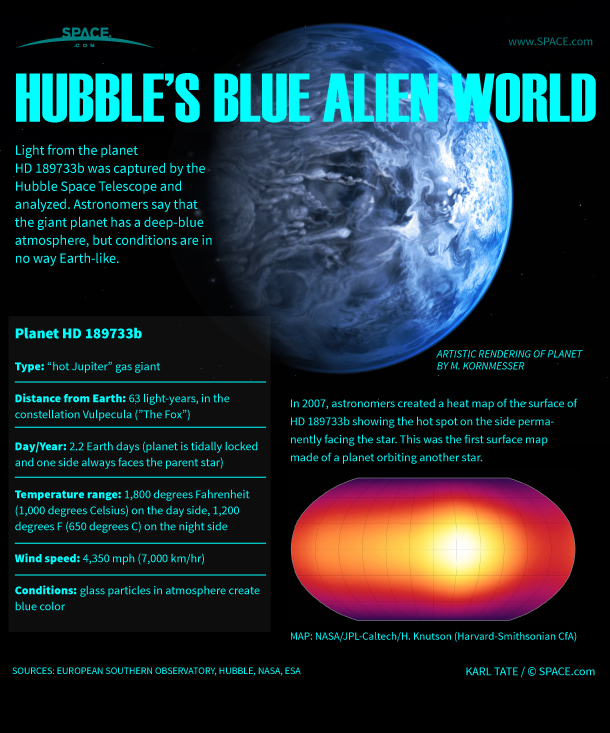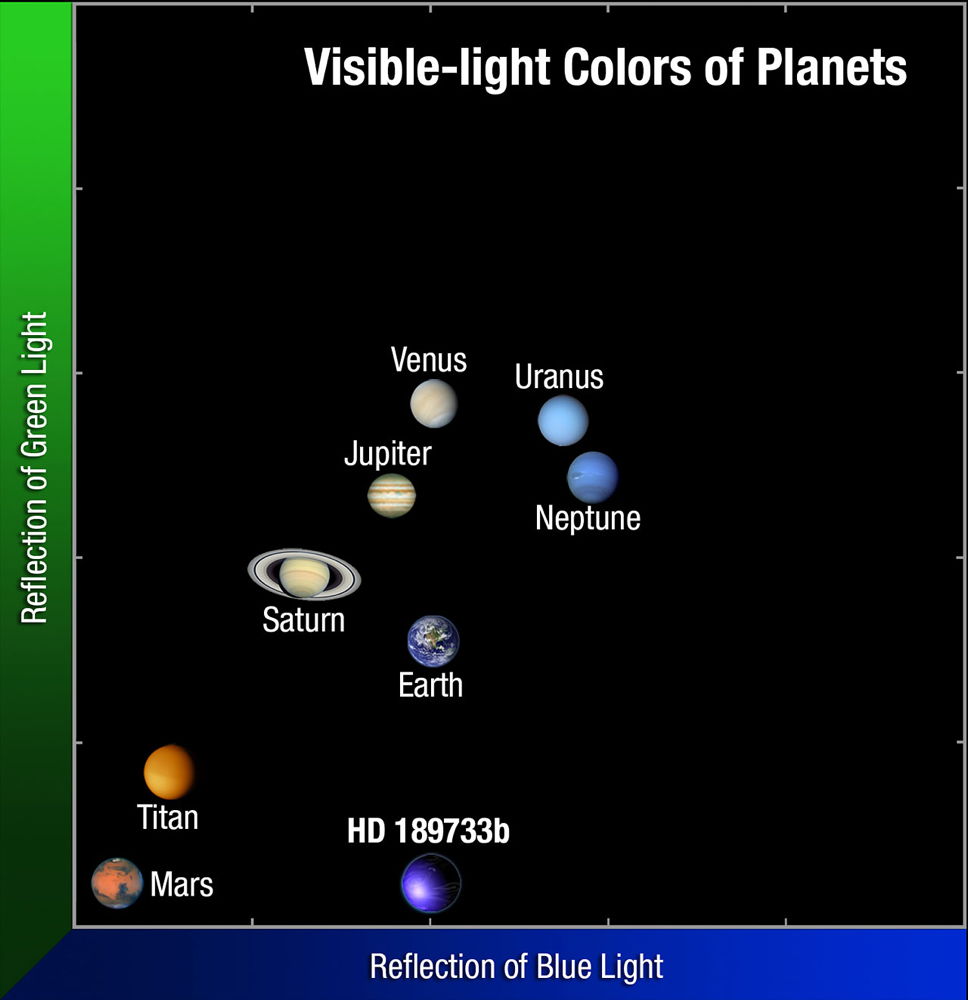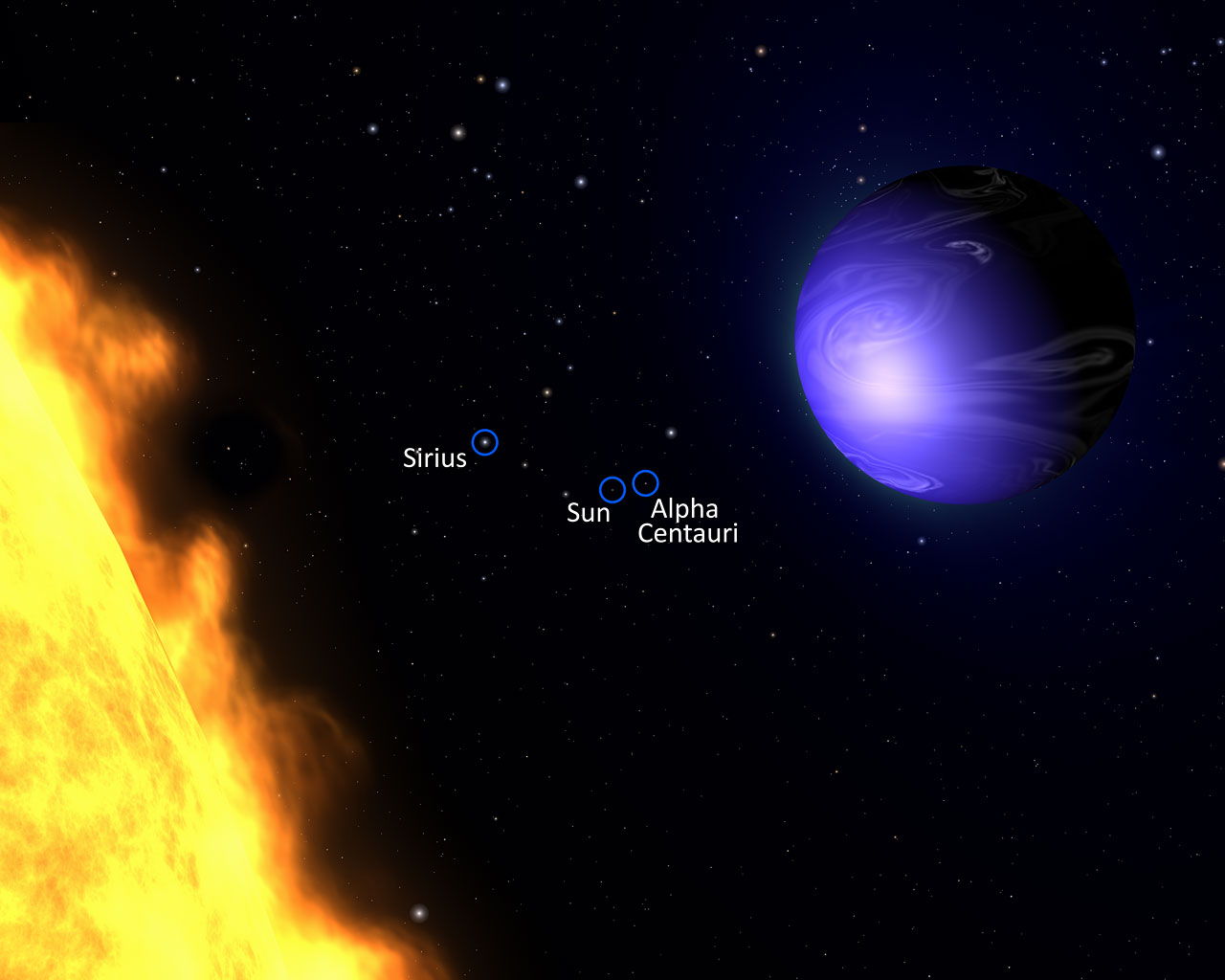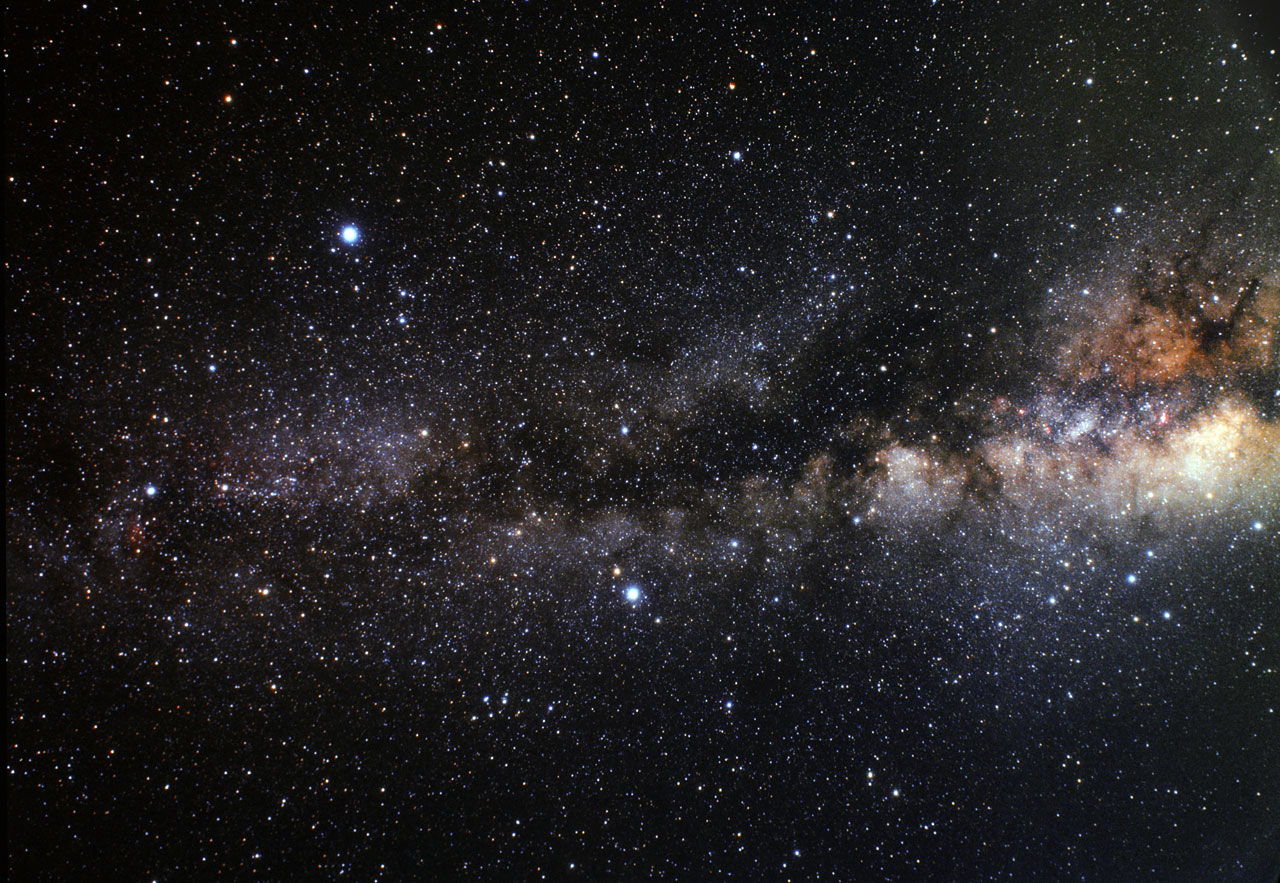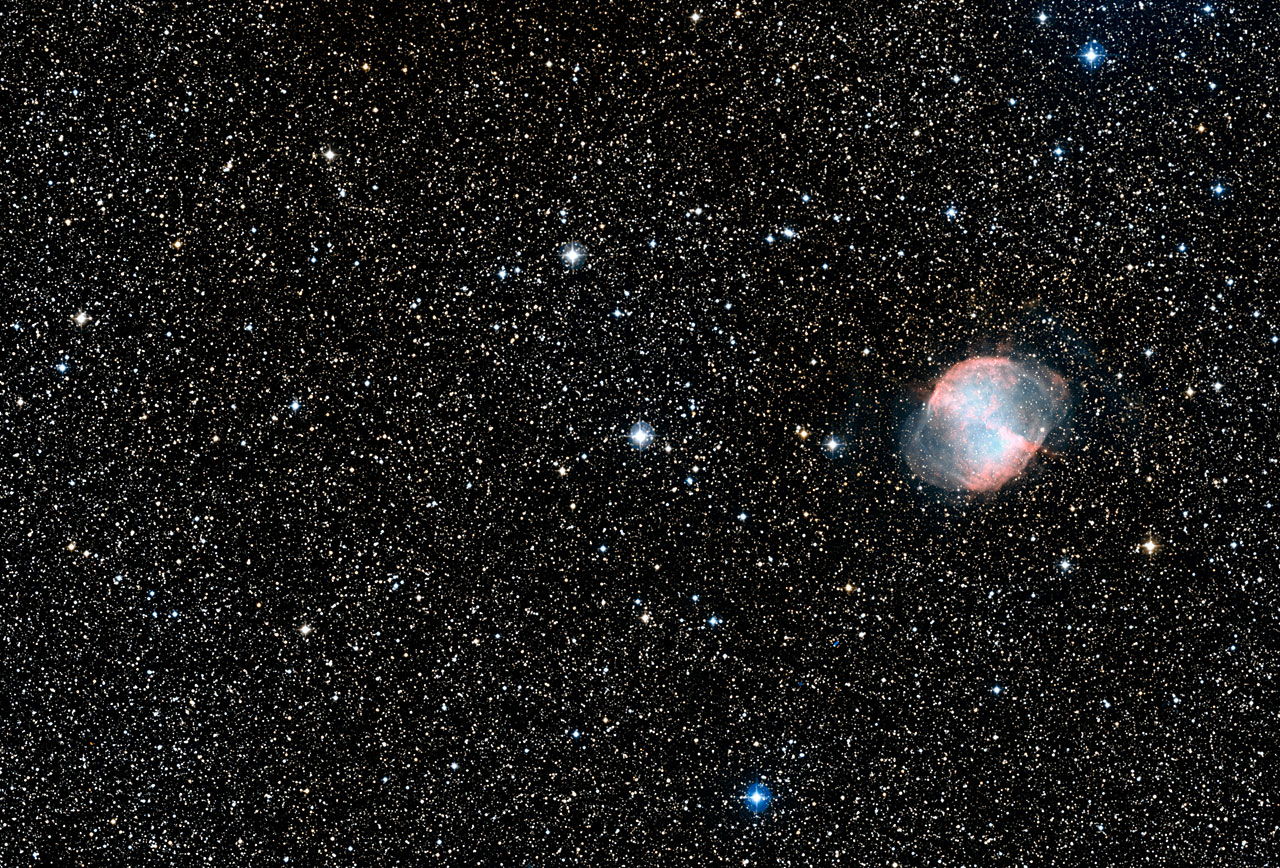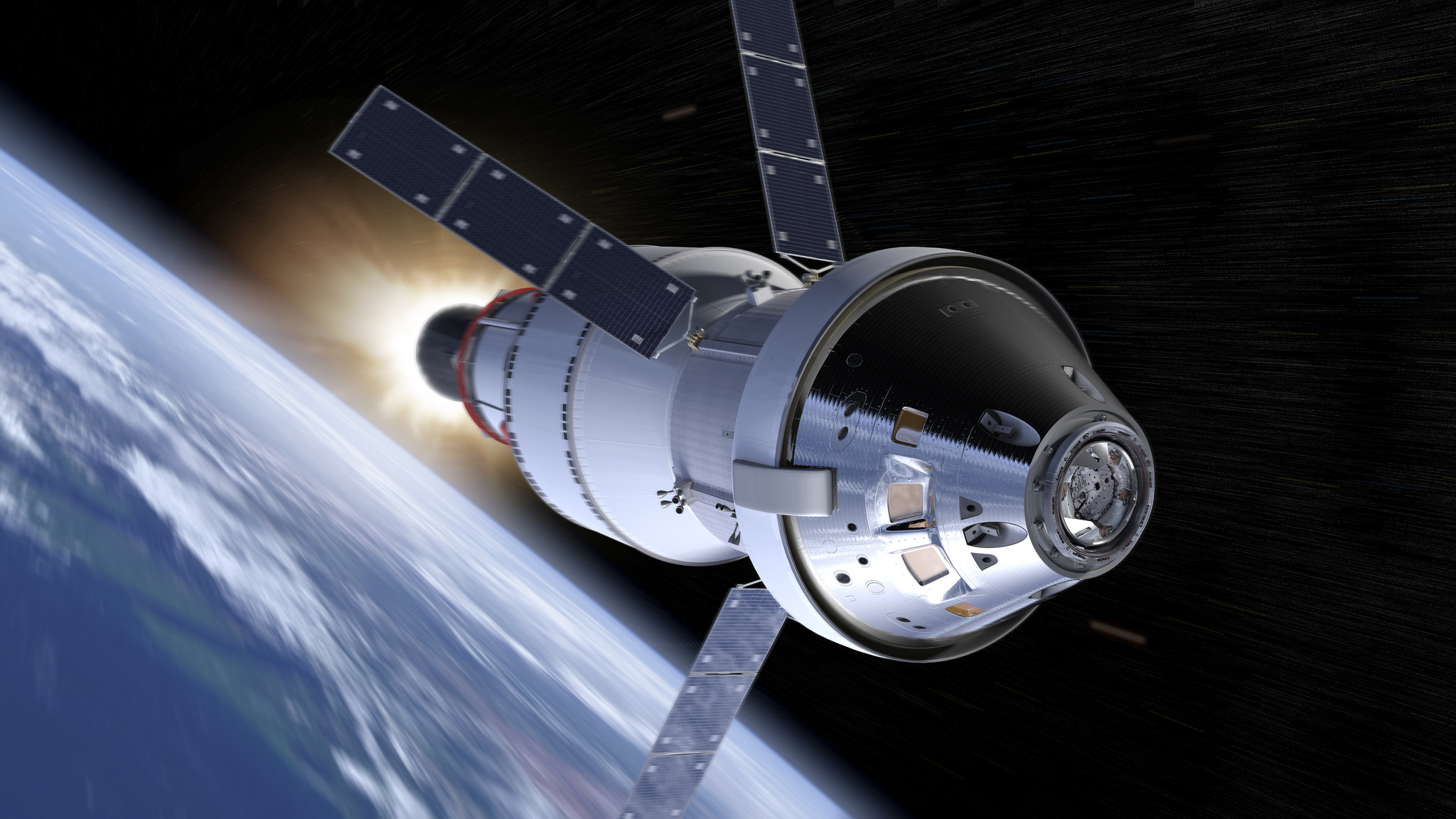Images: Blue Alien Planet's True Color Revealed by Hubble
Artist’s Impression of the Deep Blue Planet HD 189733b
This illustration shows HD 189733b, a huge gas giant that orbits very close to its host star HD 189733. The planet's atmosphere is scorching with a temperature of over 1000 degrees Celsius, and it rains glass, sideways, in howling 7000 kilometer-per-hour winds. Image released July 11, 2013. [Read the Full Story]
Exotic Blue Planet HD 189733b (Artist’s Impression)
This illustration shows a "hot Jupiter" planet known as HD 189733b orbiting its star, HD 189733. The NASA/ESA Hubble Space Telescope measured the actual visible light color of the planet, which is deep blue. Image released July 11, 2013. [Read the Full Story]
Inside Hubble's Blue Exoplanet Discovery (Infographic)
A giant blue planet is found, but the color could be due to glass particles in the hellish planet's hot atmosphere. See how it was found in this SPACE.com infographic. [Read the Full Infographic]
The Color of HD 189733b Compared to Our Solar System
This plot compares the colors of solar system planets to the color of the hot Jupiter HD 189733b. With the exception of Mars, the colors are primarily determined by the chemistry of the planets' atmospheres. Image released July 11, 2013. [Read the Full Story]
Exotic Blue Planet HD 189733b (Labelled Artist’s Impression)
This illustration shows a "hot Jupiter" planet known as HD 189733b orbiting its star, HD 189733. The NASA/ESA Hubble Space Telescope measured the actual visible light color of the planet, which is deep blue. Image released July 11, 2013. [Read the Full Story]
Wide-Field View of the Summer Triangle (Ground-Based Image)
A wide field image of the region of sky in which HD 189733b is located. In this image we can see the asterism of the "Summer Triangle" a giant triangle in the sky composed of the three bright stars Vega (top left), Altair (lower middle) and Deneb (far left). HD 189733b is orbiting a star very close to the center of the triangle. Image released Dec. 11, 2007. [Read the Full Story]
Wide-Field View of HD 189733b and Surroundings (DSS2 Excerpt, Ground-Based Image)
A star field image showing the star HD 189733 (center). The NASA/ESA Hubble Space Telescope has given astronomers a fascinating new insight into the atmosphere of HD 189733b. To the right of the star is the notable planetary nebula Messier 27. Image released Dec. 11, 2007. [Read the Full Story]
Breaking space news, the latest updates on rocket launches, skywatching events and more!

Space.com is the premier source of space exploration, innovation and astronomy news, chronicling (and celebrating) humanity's ongoing expansion across the final frontier. Originally founded in 1999, Space.com is, and always has been, the passion of writers and editors who are space fans and also trained journalists. Our current news team consists of Editor-in-Chief Tariq Malik; Editor Hanneke Weitering, Senior Space Writer Mike Wall; Senior Writer Meghan Bartels; Senior Writer Chelsea Gohd, Senior Writer Tereza Pultarova and Staff Writer Alexander Cox, focusing on e-commerce. Senior Producer Steve Spaleta oversees our space videos, with Diana Whitcroft as our Social Media Editor.

